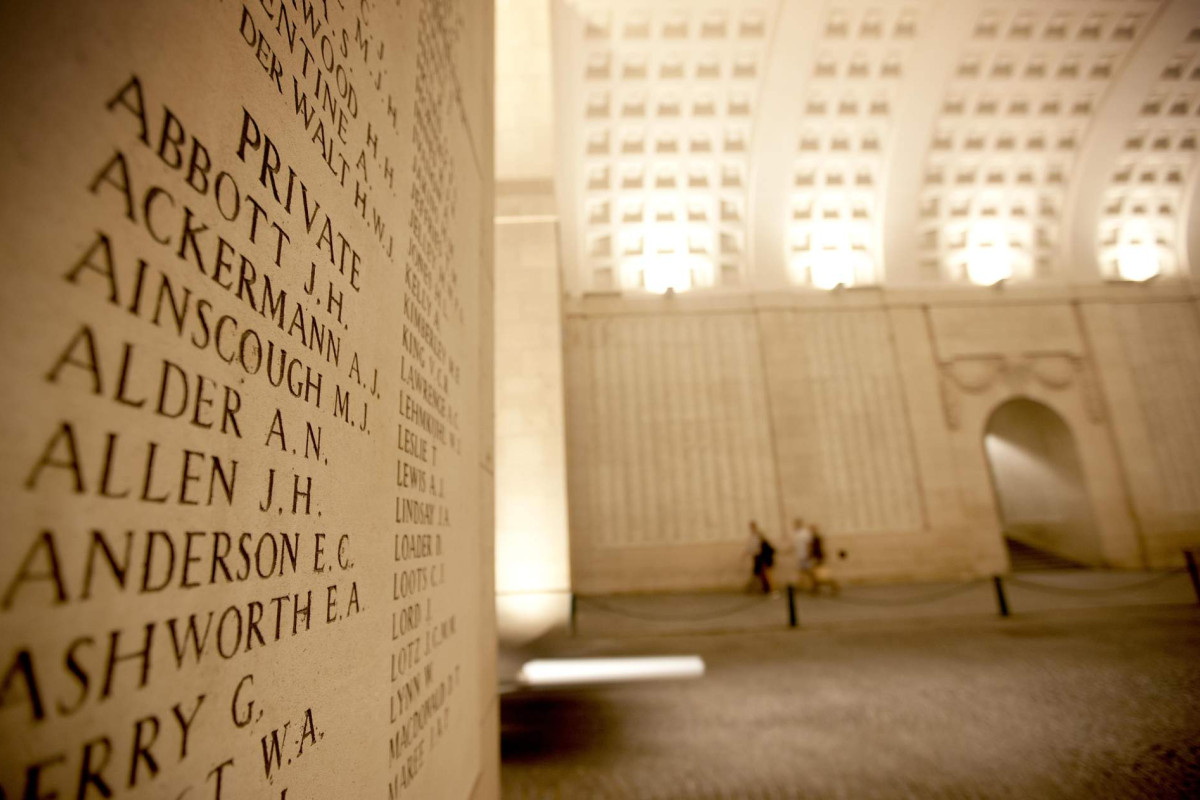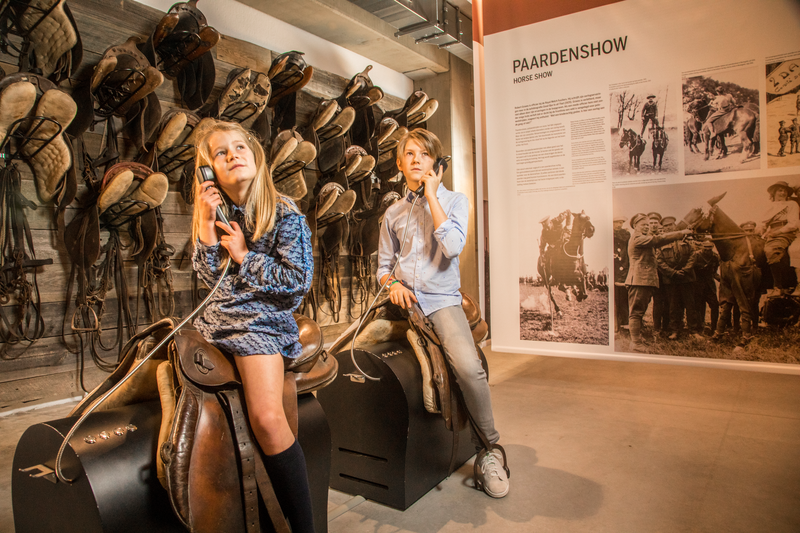Day 1
In Flanders Fields Museum
Grote Markt 34, Ieper
What better place to start our tour of Flanders Fields than in the hub of the WWI commemoration - the In Flanders Fields Museum. Instead of a ticket, we get a white bracelet with a red poppy. The recently renovated museum, located in the impressive Cloth Hall in Ypres highlights the story of the invasion, the trench war and the remembrance since the armistice, while focusing on personal stories. We take a deep breath and climb the bell-tower (231 steps!) to have a look at what were once the battlefields.
Hill 60 and Caterpillar Crater
Zwarteleenstraat, Ieper
Just a 10-minute drive from Ypres, we arrive at Hill 60 with its cratered landscape. Australians played a crucial role here, laying underground mines as part of some of the major battles in Flanders. We pay our respects at the memorial for the Australian First Tunnelling Division.
Toronto Avenue Cemetery
rue de Messines, Ploegsteert
We reach Toronto Avenue Cemetery via a muddy, narrow country track in Ploegsteert Wood, which harbours 78 graves – all of them Australians. They stand in 3 rows, most of them joined together signifying that this is a mass grave.
Bayernwald
Voormezelestraat, Wijtschate
We make a short stop in the Kemmel Tourist Office (Polenlaan 1) to buy our tickets for the Bayernwald site. The Bayernwald site shows how the German army did very much the same as the Allies - dig mines and trenches and build bunkers. The site consists of two mine shafts, a trench system and four bunkers. A series of information panels give details of the events which took place here and explain what life was really like during WWI.
Menin Gate
Menenstraat, Ieper
The Menin Gate is by far the most famous Commonwealth war memorial in Flanders. On its white walls are engraved the names of 54,896 Commonwealth soldiers whose bodies were never found (the other 34,000 names we will see tomorrow at Tyne Cot Memorial). Since 1928, each and every evening, apart from the Second World War, the Last Post is sounded just outside these walls.
The Last Post
Menenstraat, Ieper
At the end of the day, this final experience is very emotive. The four buglers - in the uniform of the voluntary fire-fighters of Ypres - stand in line and the first notes sound like a call. If we can’t call the soldiers back to life, let’s send them “a final farewell at the end of their earthly labours and at the onset of their eternal rest”, as it reads on www.lastpost.be. There are many video clips of the ceremony on YouTube but as one comment on the videos says: “You must see this once in your life. If you are not moved by it, you’re made of concrete.”
Day 2
Memorial Museum Passchendaele 1917
Berten Pilsenstraat 5a, Zonnebeke
We start the second day in the heart of the ‘Third Battle of Ypres’ or ‘ Battle of Passchendaele’ as it is more commonly known. The name is a symbol of senseless military violence. The dugout tunnel with communication and dressing post, headquarters, workplaces and dormitories, gives us an idea of how the soldiers had to live underground, like moles, because there was nothing left above ground. It’s impressive, as is the Museum with its collection of historical artefacts, images, movies and dioramas. We end our visit to the museum outside in the trenches before heading into the park that surrounds the museum.
Polygon Wood
Lange Dreve Zonnebeke
Deep in the heart of Polygon wood stands Buttes New British Cemetery and the New Zealand memorial to the Missing, which commemorates 383 soldiers of the New Zealand division. On top of the butte (hill), there is the Memorial to the 5th Australian Division. Polygon Wood still contains the remains of several shelters. Also buried in this cemetery are the “Zonnebeke Five”, five Australian soldiers whose remains were discovered in 2007 and of whom three were identified through DNA research. Each year on ANZAC day (25 April), the sacrifice of the ANZAC soldiers is commemorated during an impressive dawn service in this very location. Polygon Wood Cemetery lies just across the other side of the road.
Tyne Cot Cemetery
Vijfwegestraat, Zonnebeke
With its arched wall and colonnades in white stone, the Missing Memorial of Tyne Cot Cemetery instils respect. This is the largest military cemetery of the Commonwealth in the world. Almost 12,000 soldiers are buried here, of which 1,353 Australians. 12,000 white crosses, row after row. We stand in awe. On the Memorial Wall are the names of the 34,957 missing soldiers who fell after 15th, August 1917. The Cross of Sacrifice, built on top of a German bunker, functions as a memorial to the 3rd Australian Division.
Brothers in arms Memorial
Lotegatstraat, Zonnebeke
A memorial in honour of two Australian brothers. John had been buried by his younger brother Jim. John's grave was found in Zonnebeke in 2006 and seemed that he was buried with great care. Johan Vandewalle, the amateur archeologist that excavated the grave, was so touched by the story that he decided to raise up a memorial for the Hunter Brothers which he called “Brothers in arms”.

